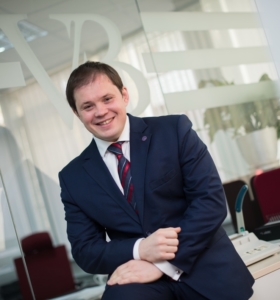The legal system of the country has come to a halt in anticipation of a significant event. Within the next few days, the High Council of Justice will announce its conclusions, and the President will sign an order on nominating new judges to the new Supreme Court.
This large-scale competition has three key features. First – the unprecedented transparency of the selection procedures. Second – not only judges, but attorneys-at-law and academics were able to participate in the competition. Thirdly, the public had a direct influence on the selection of the candidates through the institute of the Public Integrity Council (PIC), which is unparalleled anywhere in the world.
625 lawyers were admitted to the examinations, while 320 of them reached the final. From them, the High Judicial Qualifications Commission (HJQC) chose 120 finalists.
Who are these 120 potential judges? Most are professional judges (91 persons), nine attorneys-at-law, 16 academics. 34 candidates have a PhD, and 12 of them an even higher degree. The gender balance is good: 54 women, 66 men.
The competition itself took place over five stages: (1) Admission to the competition, (2) Assessment of professional skills, (3) Assessment of personal moral and psychological qualities and general abilities, (4) PIC examination, (5) Interview and formation of the final candidates rating.

Denys Bugay, partner at VB PARTNERS law firm, president of the Ukrainian Bar Association (2013-2017)
The qualifications of potential judges were checked using two methods. The first was an anonymous knowledge test. The second was a written assignment. All these stages were anonymous, the test results were checked by computer, and when assessing the written work, HJQC members did not know whose work was being assessed.
The assessment of moral and psychological qualities was especially interesting. This examination assessed future judges according to 31 factors, and consisted of four tests and an interview with a psychologist.
All this was checked using four world-known methods of psychodiagnostics: General Skills Test (logical, abstract and verbal thinking), the HCS_Integrity Check (integrity, tendency to improprieties), BFQ-2 (emotional stability, discipline, communicativeness), and ММРІ-2 (stress resistance, pathopsychological risks).
Using these test results, professiograms were formed, in which a candidate were compared to a hypothetical perfect profile of a Supreme Court judge.
Checking this enormous amount of information, the PIC drew the negative conclusions about 147 candidates. Twelve of these conclusions were revoked by the PIC.
One hundred and twenty-seven conclusions were submitted for consideration by the HJQC, 50 of which were approved, and accordingly these candidates were withdrawn. Seventy-seven candidates with a negative conclusion were allowed to continue in the selection process by the PIC, and 30 of them were included to the list of 120 “finalists.”
The interview and rating formation is the last stage. It was the only stage of the competition where a subjective factor – the opinion/influence of a particular HJQC member – was included.
Combining the results of all examinations, a candidate could get a maximum of 1,000 points. The commission assigned a personal rating for each candidate, selecting 30 winners for each of four cassation courts. It is these 120 candidates who will become the Supreme Court judges.
What conclusions can be drawn from the competition results?
A small number of candidates from outside the judicial system will be able to wear the robes of a judge of the highest instance – the lawyers and legal academics. What is the reason? First of all, it was mistrust at the stage when the competition was announced. Some highly qualified and worthy legal professionals just decided not to participate in it. Secondly, the complexity and the volume of required documents reduced the field of candidates.
The competition results are widely trusted in the professional environment. This point is confirmed by the fact that 5,335 candidates applied for another selection competition – for 600 vacancies in the courts of first instance.
For me personally, the best indicator of the competition’s success is that more than two dozen of my colleagues, who have unquestioned credibility, have been included in the “List of 120.” They would have never have had a chance to become Supreme Court judges if there had not been a competition.
I have been practicing for more than two decades. I’m not inclined to idealize either people or the system, but I am convinced that we now have a chance for change in the judicial system.
